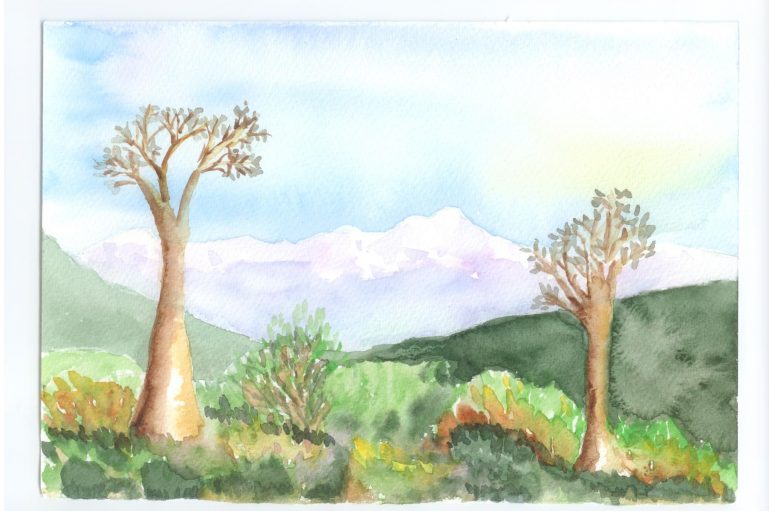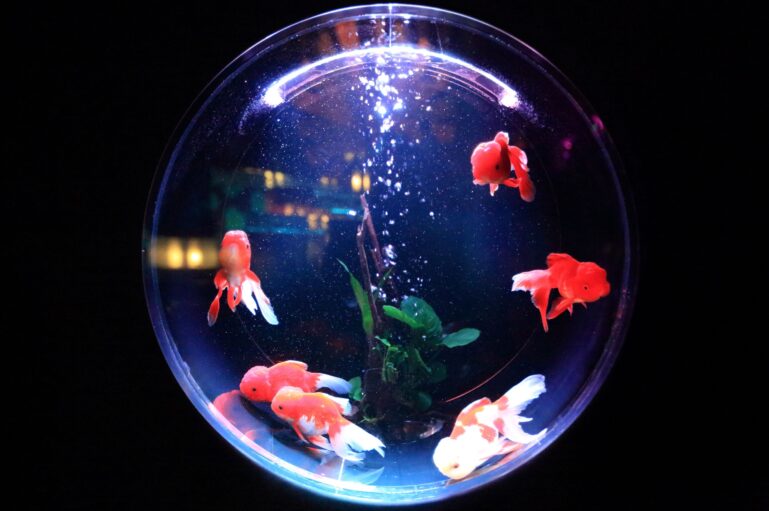I love drawing and painting, especially out in nature. Sitting down with a canvas or sheet of water-colour paper, choosing an optimal vantage point to capture the scene or parts of the scene that I want to paint, setting up the materials and relaxing in the environment that nature so generously offers – the thrill of being part of life always excites me. Parts of this excitement are the thousands of possibilities that present themselves – standing back to incorporate a panoramic view of the surrounding countryside, focusing on a tree or rocky outcrop or getting in real close to a flower or insect as it goes about its daily activities. In fact, there are literally thousands of possibilities for the artist. Nature teaches us that there is more than one right answer – capturing the snow on distant mountain peaks is one possibility, finessing the patterned effect of the bark on a quiver tree is another possibility or highlighting the early morning due on a petal is yet another possibility. The possibilities seem endless.
Growing up in earlier years, however, one was made to believe that there is only one right answer, a single possibility that is the right one. You give the “right answer” in an exam or a test, you get it marked correct. Give any other answer and it is marked incorrect. Nature, on the other hand, finds thousands of possibilities to ensure survival, propagate its various species and overcome hardships – thousands of “right answers”. As an artist, or an outdoor person, you can find them everywhere as long as you are willing to explore, to discover what nature offers as alternative solutions. Change is a constant in nature and nature adapts and seems to find possible answers to whatever it faces.
Not only does nature find thousands of possibilities to ensure its survival, but it also cultivates beauty everywhere – the colours of dead leaves forming patterns on the ground, dew on a spider’s web, sunlight causing shadows on a rocky cliff-face late in the day and even clouds forming a spectacular and colourful canopy as they embrace the early morning sunrise. Nature provides the environment for beauty to display its splendour, particularly if we are willing to look for it.
We can learn from nature as a leader and apply its self-evident principles in the workplace –
- Diversity – different education, experience, upbringing and culture mark the complexities of a staff complement. Leaders should be using this same diversity to explore alternatives, look for other possibilities and potential “answers” to propel the business forward.
- Beauty – the human being is profoundly creative and gifted, with so much to contribute if given the opportunity. Leadership should be tapping into the potential of employees, bringing their giftedness to the fore.
- Empowerment – nature releases its respective species to propagate and flourish, almost knowing that the total picture will be all the more impressive if each species plays its part. Leaders should likewise provide an environment of trust, where employees can express their uniqueness, giftedness and passion. Walter Wriston noted: “The person who figures out how to harness the collective genius of the people in his or her organisation is going to blow the competition away”.
There is indeed an abundance of, if not, thousands of possibilities – as a leader, we need to look for them constantly. The possibilities will be found in our employees – many possible “right answers” – we must be “big enough” and humble enough to listen for them!










